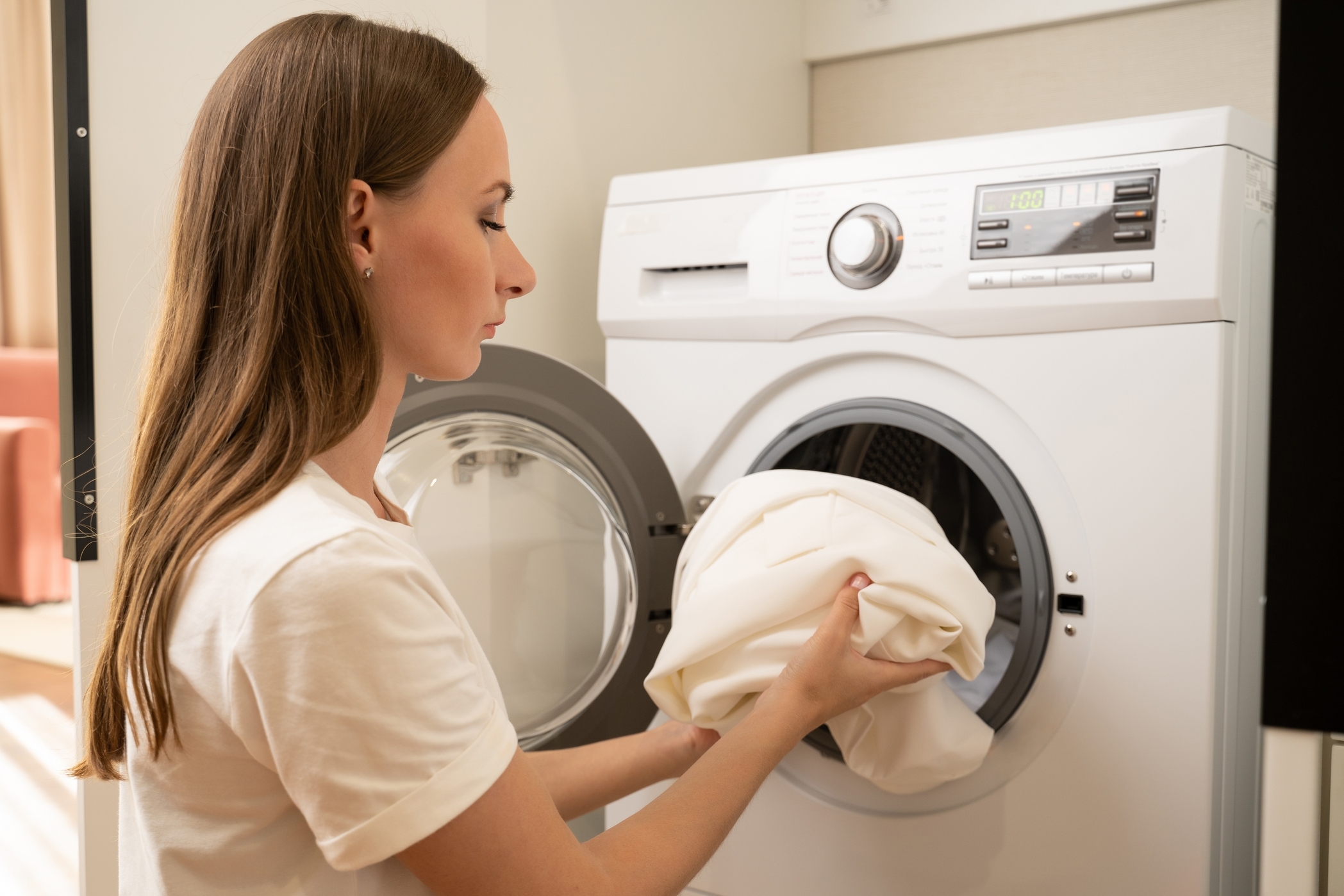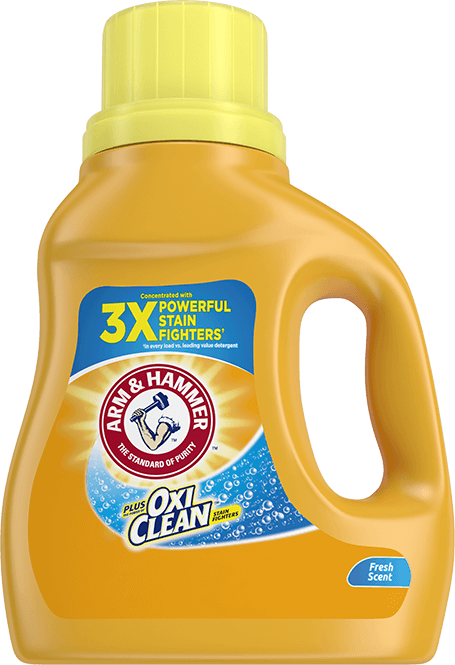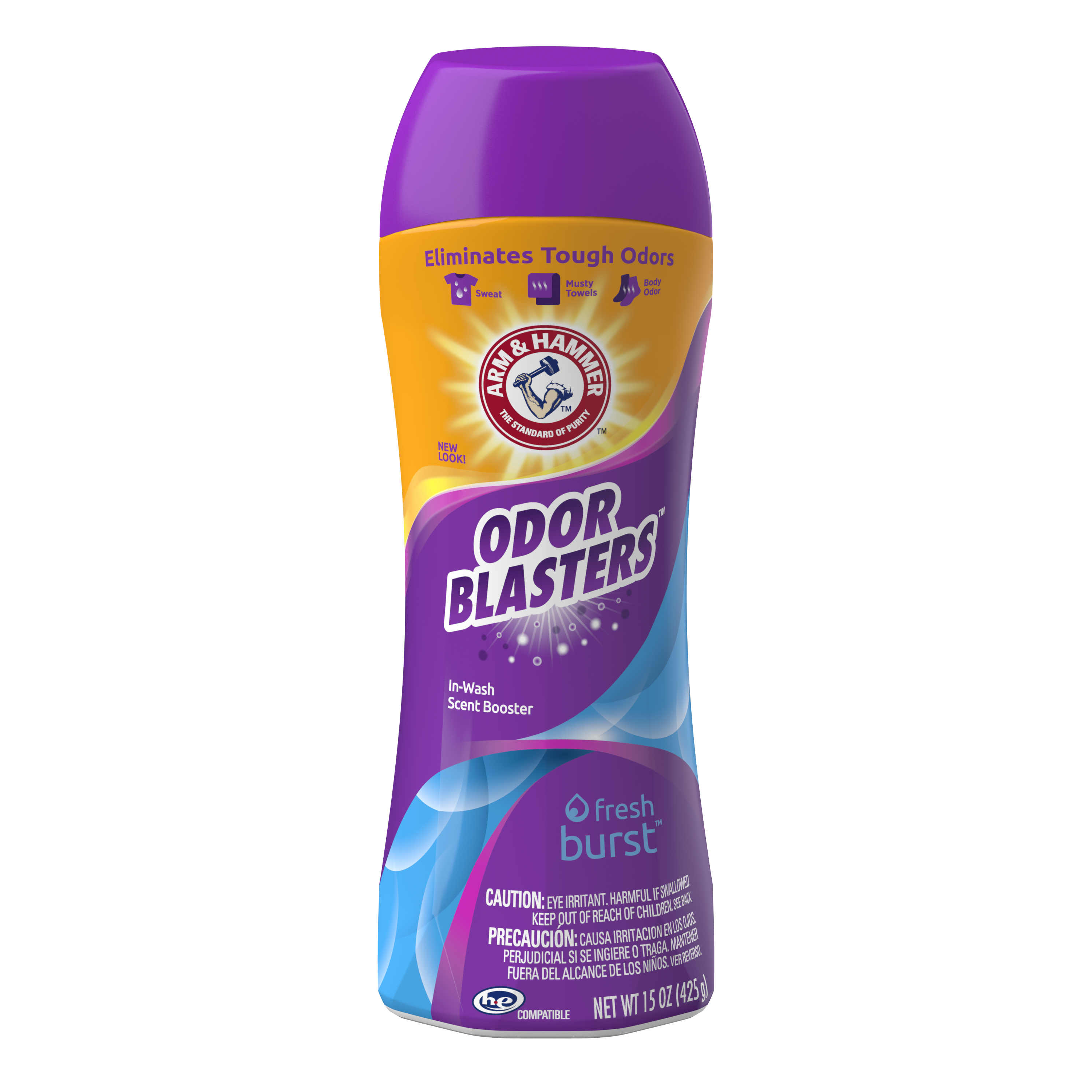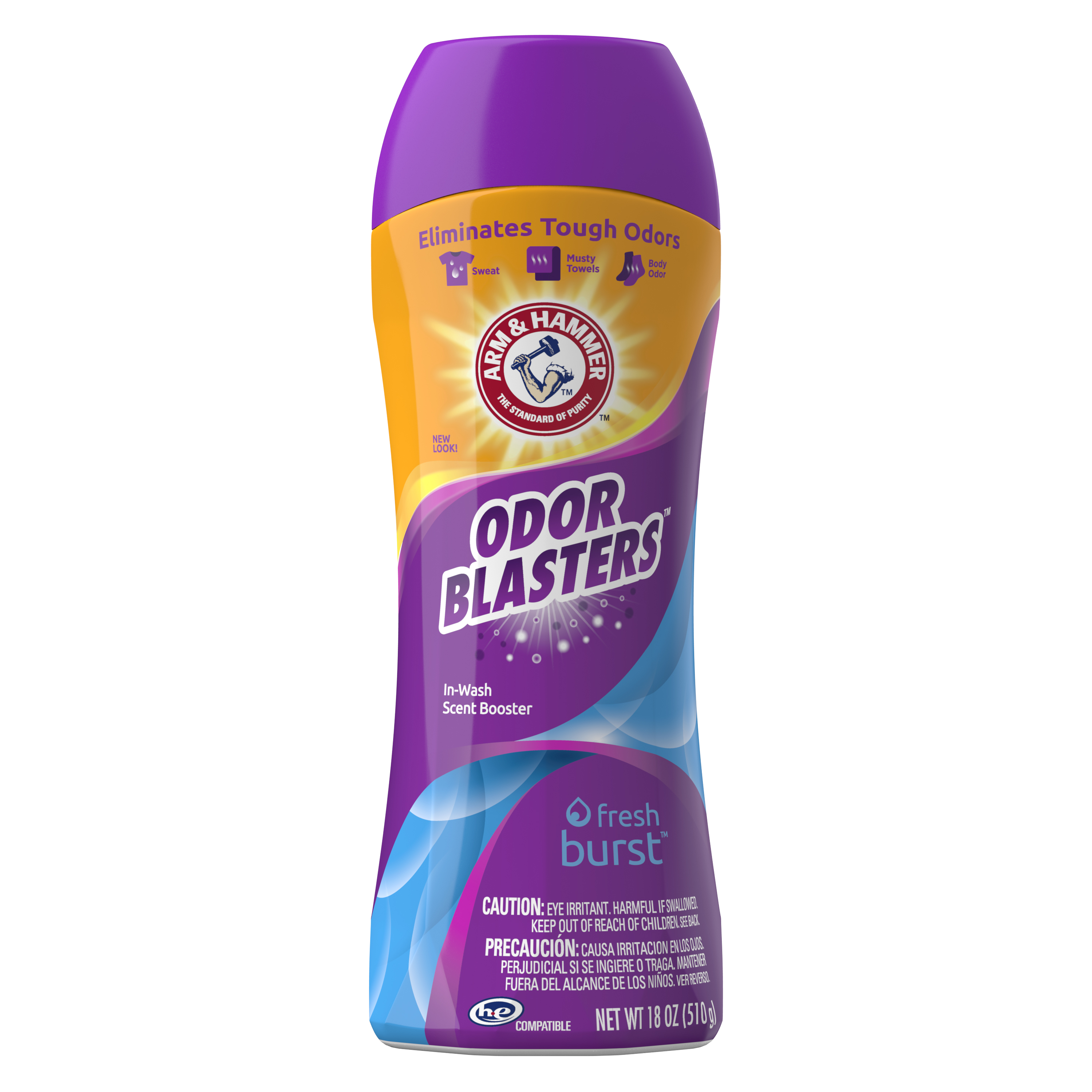What is Linen?
Linen is a textile that’s made from the fibers of a flax plant. The fibers are often fairly thick and can be woven and spun into longer threads, which is often the case in linen fabric used for things like bedsheets and curtains. The thickness of the fabric generally necessitates a lower thread count.
Nowadays, linen is sometimes associated with luxury – whether that’s bedding or clothing. That association goes back millennia. The Ancient Egyptians used linen for furnishings, decoration, clothing, and more. But they also used it for other practical uses, like linen slings they would use to hunt.
What is the Difference Between Cotton and Linen?
Whereas linen is made from the fibers of a flax plant, cotton comes from its namesake plant – the cotton plant. Since both are natural fibers and used to make clothing and other items, they are easily confused. But there are other differences.
Linen is a stronger natural fiber than cotton. However, it also takes longer to make into a fabric because the hard flax fibers are often stored for lengthy periods so they can be softened before weaving begins. Additionally, cotton is more common. According to the U.S. Department of Agriculture (USDA) , the U.S. produced nearly 1.9 million bales of raw cotton, transforming them into textiles.
Pros and Cons of Linen Fabric
Judging by the numbers, it’s clear that cotton is a preferred textile especially when it comes to clothing fabric. But linen has plenty of benefits, too! Let’s outline some of the pros and cons to linen fabric:
|
Pros |
Cons |
|
|
Does Linen Wrinkle?
Yes, just like cotton, linen fabric can get wrinkly. But its durability, softness, and naturally moisture-wicking properties make it an ideal fabric for bedsheets, tablecloths, napkins, and clothing.
Does Linen Fabric Shrink?
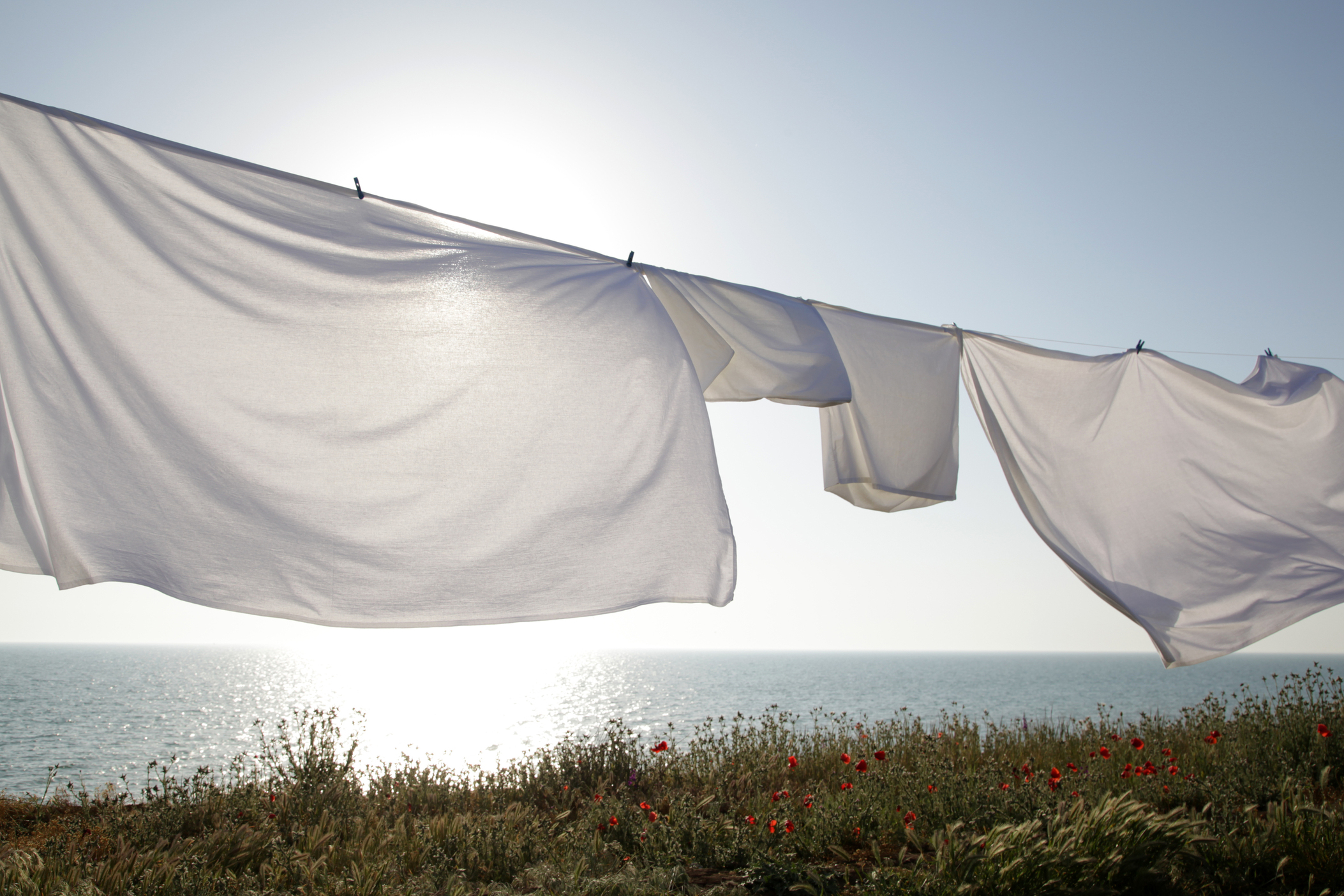
Linen fabric does shrink upon the first wash and may shrink up to 10 percent if you do not exhibit proper care when washing and drying. However, higher-quality linens may experience less shrinkage over time if they have been pre-washed.
Just as you would with the rest of your laundry items, be sure to follow the steps on your fabric care label to help reduce the potential for shrinkage.
How to Wash Linen Fabric
Specific instructions for washing your linen items may vary depending on the guidance given by the fabric care label. However, there are some general, high-level steps you can take when washing linen fabric.
1. Separate Lights & Darks, Wash Separately
Much as you should with other laundry items, you should organize your linen fabric items into light and dark piles. Additionally, it’s important to wash linen fabric separately from other items. You should not wash linen clothes or other laundry with heavy, bulky items like jeans or towels. If you have linen bedding, you may want to do multiple loads – this might mean washing sheets separately from pillows and duvets or comforters.
2. Wash in Lukewarm Water on a Delicate Cycle
We discussed how excessively cold or hot water washes can cause linen fabric to shrink. Thus, you should try to wash these items in lukewarm water if possible. You should also choose a delicate wash setting. And be sure to avoid overloading the washer – giving your linen fabric room to move around in the wash will help get a more thorough clean.
3. Use a Stain- or Odor-Removing Detergent
You probably want your linens to look as close to spotless as possible. Try some of the following ARM & HAMMER™ laundry detergents to help eliminate stains and odors from your linen clothing or other items:
- ARM & HAMMER™ Deep Clean Stain Formula features millions of micro-scrubbers that penetrate deep between clothing fibers and attack tough stains. It’s also made with 100 percent renewable electricity and comes in a recycle-friendly bottle.
- ARM & HAMMER™ Deep Clean Odor Formula Radiant Burst is the most powerful odor eliminator formula from ARM & HAMMER™ yet. It’s made to target and eliminate sweat & body odors, musty towel odors, and more!
- ARM & HAMMER™ Free & Clear Liquid Laundry Detergent is free of dyes, perfumes, parabens, preservatives. It is also 100% certified by SkinSAFE™ to exclude 100% of their topmost considered allergens.
Additionally, you should avoid using bleach or detergents with optical brighteners, as these items may cause discoloration.
4. Air Dry When Possible
Air drying can help preserve the integrity of linen fabric fibers. You might not have enough room to air dry linen bedding in your home, but you should try to air dry linen clothing whenever possible. If you elect to tumble dry, do so on low heat.
Lastly, you might also consider hand washing linen fabric. In that case, following a laundry stripping recipe is the way to go to help remove lingering residue and debris from these items.
How to Wash Linen Clothes: Shirts, Pants & More
The first thing you want to do before washing your linen clothes is make sure they’re machine washable. With dress shirts, for example, the fabric care label may recommend dry cleaning.
If your dress shirt, pants, or blouse has buttons or zippers, you want to button up all the buttons and zip all the zippers before throwing your items in the wash. Then, follow the steps above and hang your items to air dry, or lay them flat on a rack to air dry – ideally in a cool environment without direct exposure to sunlight.
How to Wash Linen Sheets, Tablecloths & Napkins
The steps for washing linen sheets, tablecloths, and napkins are mostly the same as washing linen clothes. However, you want to take special care to avoid wrinkling. So, it’s a good idea to shake out your sheets, tablecloths, and napkins after taking them out of the wash. If you cannot air dry sheets, tablecloths, and napkins, use a permanent press cycle when tumble drying.
Help Your Linens Last!
Taking proper care of your linen clothes and other linen fabric laundry items can help extend their lifespan. Turn to ARM & HAMMER™ laundry detergents when washing your linens so you can get a deep clean and help these fabrics grow softer and stronger over time!
